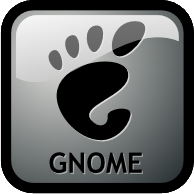There’s no denying that 2012 has been a momentous year for Linux, and the Linux Foundation’s recent video entitled “What a Year for Linux” does a nice job of highlighting several of the more significant events.
Of course, like any other year, the one now drawing to a close has been more than simply a collection of individual successes for Linux. Rather, such events tend to be indicative of larger trends that collectively make up the big picture.
Ready for a few examples? Here are seven key trends I think defined this past year of Linux computing.
1. Tiny, Cheap PCs
Anyone trying to keep track of the flurry of diminutive and inexpensive Linux-powered PCs that e merged over this past year would have to be forgiven if they emerged from the effort feeling downright dizzy. The Raspberry Pi is certainly the most widely publicized such effort, but there have been many others that came to light as well, including the Cotton Candy, the MK802, and the Mele A1000, to name just a few. Computing power is becoming ever less expensive not just for enthusiasts and children–for whom the Raspberry Pi was originally designed–but also for the underprivileged. If that’s not a major step towards bridging the Digital Divide, I don’t know what is.
merged over this past year would have to be forgiven if they emerged from the effort feeling downright dizzy. The Raspberry Pi is certainly the most widely publicized such effort, but there have been many others that came to light as well, including the Cotton Candy, the MK802, and the Mele A1000, to name just a few. Computing power is becoming ever less expensive not just for enthusiasts and children–for whom the Raspberry Pi was originally designed–but also for the underprivileged. If that’s not a major step towards bridging the Digital Divide, I don’t know what is.
2. Linux Preloaded
If the march of the tiny PCs has been dizzying for the casual observer, so, too, has the number of PC options appearing on the market with Linux preloaded. It used to be that Linux was almost always installed by the user on a PC originally sold with Windows.
Today, that can no longer be assumed thanks to exciting new offerings from specialists such as System76 as well as general makers like Asus and Dell. An added benefit: If this trend continues, we may finally get some more accurate figures for Linux usage on the desktop.
3. Mobile, Cloud, and HPC Dominance
 It may no longer be any secret that Linux already dominates the mobile space–via Android–as well as the cloud and high performance computing, but it’s still worth pointing out. There’s no end in sight to Linux’s strength in these areas.
It may no longer be any secret that Linux already dominates the mobile space–via Android–as well as the cloud and high performance computing, but it’s still worth pointing out. There’s no end in sight to Linux’s strength in these areas.
4. The Secure Boot Challenge
Lest the picture get too rosy for Linux, however, the past year has also been notable for the prominence of the Secure Boot problem. For those who missed it, hardware featuring Microsoft’s new Windows 8 comes with Secure Boot enabled in the Unified Extensible Firmware Interface (UEFI), meaning that only operating systems with an appropriate digital signature can boot. Ubuntu, Fedora, SUSE Linux, the Free Software Foundation and the Linux Foundation are all among the groups that have spoken out and/or proposed a solution to this problem.
5. GNOME 2’s Enduring Appeal
The past year or two have seen the rise of mobile-style desktop environments including not just Ubuntu’s Unity and GNOME 3 but also Microsoft’s Windows 8 Modern UI, formerly known as Metro. Some users have adapted easily to these new interfaces; others have not.

It’s been fascinating to watch the rise of Linux desktop alternatives that emulate the old, beloved GNOME 2, including not just the MATE and Cinnamon desktops but also distros such as SolusOS. Just recently, of course, the GNOME project itself announced that GNOME 2 is coming back. It definitely seems fair to say that GNOME 2 reigns supreme in desktop Linux users’ hearts.
6. Commercial Growing Pains
It’s also been an interesting year for understanding Linux and profitability. Early on we saw Red Hat hit $1 billion in revenues, of course, making it plain for all to see that Linux can be a way to make a living. At the same time, however, Ubuntu maker Canonical has had something of a struggle as it has tried to take advantage of revenue opportunities such as by integrating Amazon search results into searches via the Unity Dash. Particularly with community-focused distributions, this uneasy relationship with the financial side of Linux promises to continue.
7. Linux: The Next Gaming Platform?
Last but certainly not least, a trend many would surely name as the most significant of all for Linux is its growing acceptance by gaming vendors. Valve is finally embracing Linux for its Steam gaming platform, and other gaming companies are starting to do the same. Where games go, so, too, do countless PC users.
Yes, it’s been quite a year for Linux. I can’t wait to see what next year brings.


